Home>diy>Building & Construction>What Is Cut And Fill In Construction
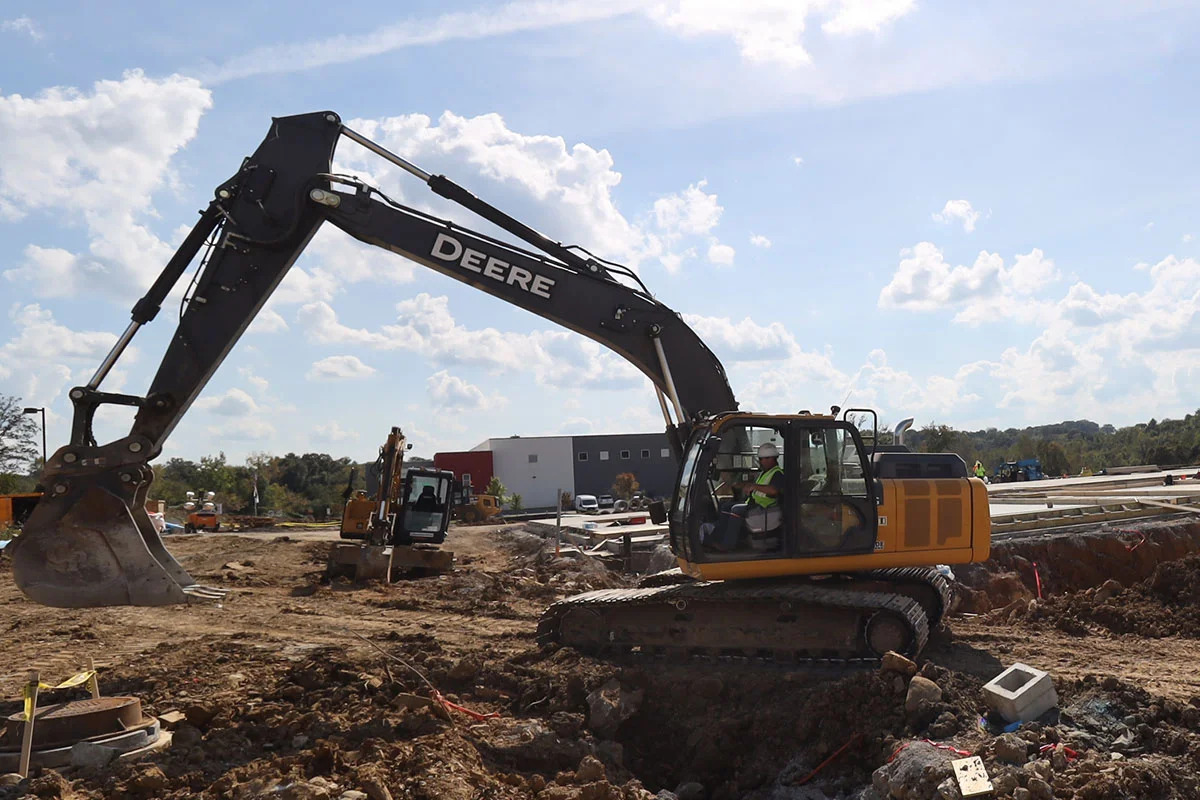

Building & Construction
What Is Cut And Fill In Construction
Modified: August 17, 2024
Learn about cut and fill in building construction, the process of moving and redistributing soil to create level surfaces and adjust elevation. Understand the importance of this technique in optimizing land utilization for construction projects.
(Many of the links in this article redirect to a specific reviewed product. Your purchase of these products through affiliate links helps to generate commission for Storables.com, at no extra cost. Learn more)
Introduction
In the world of construction, various techniques and processes are involved to ensure the successful completion of a project. One such process is cut and fill, which plays a crucial role in shaping the terrain and preparing the site for various structures. Whether it’s constructing a building, a road, or even a garden, cut and fill operations are often necessary to modify the existing topography.
So, what exactly is cut and fill in construction? In simple terms, it refers to the process of excavating material from one location (cut) and using it to fill another location (fill). This process is carried out to achieve a desired elevation or slope on a construction site. Cut and fill operations can involve moving soil, rocks, gravel, or any other debris that needs to be relocated or redistributed.
The purpose of cut and fill in construction is not only to modify the topography of a site but also to create a level surface suitable for various construction activities. It helps in the preparation of foundation trenches, creation of building pads, formation of road embankments, and landscaping projects. The ultimate goal is to ensure stability, proper drainage, and the ability to support any future structures.
Several factors influence the decision to implement cut and fill techniques in construction projects. The first factor is the natural terrain, which may have irregular slopes, depressions, or high points that need to be adjusted. Additionally, the desired elevation and aesthetics of the site are significant factors. For example, when constructing a road on a hilly terrain, cut and fill techniques are indispensable to level the road surface.
Methods of cut and fill involve different approaches and techniques. One common method is the balanced cut and fill, where the amount of material excavated from the cut area is equal to the amount of fill required in another location. This method ensures that the cut and fill areas remain in equilibrium, minimizing the need for additional material or disposal.
To carry out cut and fill operations, various equipment and tools are employed. Excavators and bulldozers are commonly used to excavate the soil and move material from one place to another. Graders and rollers are utilized to level and compact the fill material, ensuring proper stability.
However, cut and fill operations come with their own set of challenges and considerations. One major challenge is the accurate estimation of the material to be excavated and filled. It requires careful planning and surveying to determine the volume of material required and to avoid any shortages or wastage. Inaccurate estimations can lead to delays and additional costs.
Key Takeaways:
- Cut and fill operations in construction involve excavating material from one location and redistributing it to another to create a level surface or desired slope, requiring careful planning, accurate estimation, and suitable equipment.
- Prioritizing safety measures, environmental impact mitigation, and sustainable practices are crucial for successful and responsible cut and fill operations in construction, ensuring worker well-being and environmental stewardship.
Read more: What Are Pin Cushions Filled With
Definition of Cut and Fill
Cut and fill is a construction technique used to modify the topography of a site by excavating material from one location (cut) and using it to fill another location (fill). It involves the movement of soil, rocks, gravel, or other debris to create a level surface or desired slope for various construction activities. Cut and fill operations are common in projects such as building construction, road formation, and landscaping.
The process of cut and fill begins with the identification of areas that need to be excavated or filled. This is determined by the desired elevation or slope for the project, the natural terrain, and the requirements of the structures to be built. Excavation is carried out using heavy equipment like excavators and bulldozers, which remove material from the cut area in a controlled manner.
The excavated material is then transported and placed in the fill area. In some cases, the excavated material may need to be processed or treated before being used as fill. This is done to ensure its stability and suitability for the construction project. The fill material is then spread and compacted using graders and rollers to achieve the desired level and density.
One important aspect of cut and fill is ensuring that the cut and fill areas remain in balance. This means that the volume of material excavated from the cut area should be equal to or slightly less than the volume of material used for the fill area. This helps to avoid excessive material wastage or the need for additional fill material. Achieving a balanced cut and fill operation requires accurate estimation of the material quantities and careful planning.
Cut and fill operations have both practical and aesthetic purposes in construction. Practically, they help to create a level surface for the construction of foundations, roads, and other structures. They also play a role in drainage management, ensuring that water flows correctly across the site. Aesthetically, cut and fill can be used to shape the terrain and create visually appealing landscapes, such as terraced gardens or scenic overlooks.
In summary, cut and fill is a construction technique that involves excavating material from one area and using it to fill another area, with the purpose of modifying the topography to create a stable and suitable surface for construction activities. It requires careful planning, precise estimation, and the use of heavy equipment to ensure the success of the operation.
Purpose of Cut and Fill in Construction
The purpose of cut and fill in construction is multi-fold, serving both practical and functional needs during the development of a construction site. This technique is employed to modify the topography of the land, creating a level surface or desired slope that is conducive to the construction of various structures. By implementing cut and fill operations, several key objectives are achieved:
- Foundation Preparation: Cut and fill is essential in the preparation of foundation trenches for buildings and structures. It allows for excavation to the required depth, ensuring a stable and solid foundation that can support the weight of the structure above.
- Road Formation: In road construction projects, cut and fill plays a crucial role in shaping the terrain to create a suitable road alignment. By excavating material from high points and filling low points, a leveled surface can be achieved, allowing for the proper construction of roadways.
- Drainage Management: Proper drainage is vital for any construction site. Cut and fill operations help to create slopes or contours that facilitate the efficient flow of water, preventing water accumulation and potential erosion issues.
- Landscaping and Aesthetics: Cut and fill techniques can be used to sculpt the land and create visually appealing landscapes. They enable the creation of terraced gardens, retaining walls, and other features that enhance the overall aesthetics of the site.
- Optimization of Site Space: Cut and fill is often employed to optimize the available space on a construction site. By adjusting the topography, additional usable space can be gained, allowing for the construction of more structures or the incorporation of specific design elements.
- Soil Stabilization: Cut and fill operations can help redistribute soil to improve its stability. By redistributing excavated material to areas where additional support is needed, the overall stability of the site can be enhanced.
Additionally, cut and fill operations may be necessary for practical reasons, such as the creation of access roads, parking lots, or leveling an area for equipment staging. Furthermore, understanding the purpose of cut and fill in construction allows for strategic planning and efficient allocation of resources, reducing costs and ensuring the successful completion of the project.
Overall, the purpose of cut and fill in construction is to shape the terrain, prepare the site for construction activities, achieve stability, optimize space, manage drainage, and enhance the overall aesthetics of the project. By carefully implementing cut and fill techniques, construction professionals can transform uneven or sloping land into a well-prepared and functional site for various construction endeavors.
Factors Affecting Cut and Fill
Several factors influence the execution and feasibility of cut and fill operations in construction projects. These factors need to be carefully considered and analyzed to ensure efficient and successful implementation of the technique. Here are some of the key factors that affect cut and fill:
- Natural Terrain: The existing topography of the site is a significant factor in determining the extent and complexity of cut and fill operations. Sites with steep slopes, irregular contours, or varying elevations may require more extensive earthwork to achieve the desired level surface or slope for construction.
- Desired Elevation and Slope: The specific requirements of the project, such as the desired elevation of structures or the slope of roadways, greatly influence cut and fill operations. The degree of excavation or fill required depends on the desired design specifications and functional needs of the project.
- Structural Considerations: The type and nature of the structures to be built on the site play a role in determining the cut and fill requirements. For example, buildings with deep foundations may necessitate larger excavations, while the construction of roads or parking areas may require extensive fill to achieve proper surface levels.
- Volume of Material: The volume of material to be excavated or filled is a crucial factor in planning and executing cut and fill operations. Accurate estimation of this volume is essential to ensure adequate quantities of material are available and to prevent shortages or wastage during the process. Factors such as the density and compaction characteristics of the material also need to be considered.
- Environmental Impact: Environmental factors, such as existing vegetation, bodies of water, or protected habitats, can significantly influence cut and fill operations. Environmental regulations and permits may be required and can affect the extent and methods used for excavating and filling. Conservation and mitigation measures may need to be implemented to minimize the impact on the surrounding ecosystem.
- Project Constraints: Time, budget, and site access are other factors that can affect the implementation of cut and fill operations. Project schedules, financial limitations, and logistical challenges need to be taken into account during the planning phase to ensure a smooth and timely execution of the technique.
By considering these factors, construction professionals can effectively assess the feasibility and viability of implementing cut and fill operations. Detailed surveys, geotechnical investigations, and engineering analysis are often conducted to gather the necessary data and information to make informed decisions regarding cut and fill requirements.
It is essential to note that each construction project is unique, and the factors influencing cut and fill may vary. Proper evaluation and analysis of these factors are crucial to achieving a successful cut and fill operation that meets the project’s objectives in terms of structural stability, design requirements, efficiency, and environmental compliance.
Methods of Cut and Fill
When it comes to cut and fill operations in construction, there are various methods and approaches that can be employed depending on the specific requirements of the project. These methods aim to efficiently excavate material from one location (cut) and redistribute it to another location (fill), resulting in the desired topography and surface conditions. Here are some commonly used methods of cut and fill:
- Single Bench Method: In this method, excavation is done in a single horizontal level or bench across the site. The excavated material is then used to fill lower areas or create embankments. This method is suitable for projects where a uniform slope or elevation is desired.
- Multiple Bench Method: Similar to the single bench method, the multiple bench method involves excavating and filling in horizontal levels or benches. However, in this method, each bench is stepped or terraced, creating a series of flat surfaces. This method is often used for landscaping projects or to create visually appealing architectural features.
- Trench Method: The trench method involves excavating narrow trenches or channels along the desired alignment of the structures or roadways. The excavated material is then used to fill low-lying areas or raise the ground level to the desired elevation. This method is commonly used for the installation of utilities or as a foundation preparation technique.
- Topsoil Stripping: Before the cut and fill process begins, the topsoil layer, which is rich in organic matter and nutrients, is often removed and stockpiled separately. Once the cut and fill operations are complete, the topsoil is spread back over the filled areas to support vegetation growth and enhance landscaping efforts.
- Rolling Method: The rolling method involves utilizing heavy compacting machinery, such as rollers or compactors, to compress the fill material and create a stable and even surface. This method is particularly effective for projects that require proper compaction and load-bearing capacity, such as road construction.
- Balanced Cut and Fill: This method aims to achieve a balance between the volume of material excavated (cut) and the volume of material placed (fill), minimizing the need for additional material. The excavated material is carefully redistributed to areas that require filling, maintaining equilibrium and reducing material wastage.
Each method has its own advantages and is typically selected based on factors such as the project requirements, terrain characteristics, and design considerations. The chosen method should ensure the stability of the site, proper drainage, and adherence to environmental regulations.
It is important to note that the specific techniques and equipment used for cut and fill operations can vary depending on the project’s scale and complexity. Professional surveying, engineering expertise, and careful planning are essential to determine the most appropriate method and ensure the successful execution of cut and fill operations.
Cut and fill in construction refers to the process of cutting into the existing ground to create a level surface for construction, and then using the excavated material to fill in lower areas. Proper planning and surveying are essential to minimize costs and environmental impact.
Read more: What Is Loose Fill Insulation
Equipment and Tools Used in Cut and Fill
When it comes to executing cut and fill operations in construction projects, a range of specialized equipment and tools are utilized to ensure efficiency and accuracy. These equipment and tools are designed to facilitate the excavation, movement, and placement of material during the cut and fill process. Here are some commonly used equipment and tools:
- Excavators: Excavators are versatile heavy machinery used extensively in cut and fill operations. They are equipped with a bucket or scoop attached to a hydraulic arm, allowing for the excavation and removal of soil, rocks, and other materials from the cut area.
- Bulldozers: Bulldozers are robust machines equipped with a large blade at the front. They are used to push and move large amounts of material, making them ideal for both excavation and filling tasks. Bulldozers can help create a level surface by pushing and compacting the fill material.
- Graders: Graders are commonly used to achieve a smooth and level surface during fill operations. They have a long blade that can be adjusted to fine-tune the elevation of the fill material. Graders are particularly useful for road construction projects where precise leveling is required.
- Rollers: Rollers, also known as compactors, are used to achieve proper compaction of the fill material. They come in different sizes and types, including smooth drum rollers and padfoot rollers. Rollers apply pressure to the material and help increase its density, ensuring stability and load-bearing capacity.
- Dump Trucks: Dump trucks are essential for transporting excavated material from the cut area to the fill area. They have large rear hoppers that can be hydraulically raised, allowing for efficient dumping of materials. Dump trucks come in different sizes to accommodate varying project requirements.
- Surveying Equipment: Accurate surveying equipment, such as total stations, GPS systems, and laser levels, play a crucial role in the planning and execution of cut and fill operations. They help in measuring the elevation and contours of the site, ensuring precise excavation and fill placement.
- Shovels and Rakes: Hand tools like shovels and rakes are essential for manual excavation and spreading of fill material. They are useful in areas where access for larger machinery is limited or when fine grading and finishing work is required.
- Safety Equipment: Personal protective equipment (PPE) is of utmost importance during cut and fill operations to ensure the safety of workers. This includes hard hats, high-visibility vests, safety goggles, gloves, and steel-toe boots.
In addition to these main equipment and tools, various supporting machinery, such as loaders, scrapers, and compaction equipment, may also be utilized depending on the project’s requirements and site conditions.
It is crucial to ensure that equipment operators are trained and experienced in using the specific machinery required for cut and fill operations. Adequate maintenance, regular inspections, and adherence to safety protocols are also essential to ensure smooth and safe operation of the equipment.
By utilizing the appropriate equipment and tools for cut and fill, construction professionals can achieve efficient and precise excavation, transportation, and placement of materials, resulting in the successful completion of the project while meeting the required specifications.
Challenges and Considerations in Cut and Fill
While cut and fill operations are essential in shaping the terrain for construction projects, they also come with their own set of challenges and considerations that need to be addressed. Understanding and effectively managing these challenges is crucial to the successful execution of cut and fill. Here are some common challenges and considerations:
- Accurate Estimation: One of the primary challenges in cut and fill operations is accurately estimating the volume of material to be excavated and filled. Inaccurate estimations can lead to delays, cost overruns, or even project failure. Professional surveying and geotechnical investigations are necessary to obtain precise measurements and data for estimation.
- Topographical Constraints: Sites with complex terrain, steep slopes, or irregular contours pose challenges for cut and fill operations. It may require additional planning, specialized equipment, and precise execution to achieve the desired level surface or slope, without compromising stability and safety.
- Material Quality: The quality and suitability of the excavated and fill material are essential considerations. It is crucial to assess the properties of the material, such as its density, compaction characteristics, and load-bearing capacity. Unsuitable material may require treatment, removal, or additional sourcing, leading to increased costs and potential delays.
- Environmental Impact: Cut and fill operations can have environmental implications. Excavation, soil disturbance, and material transportation can affect ecosystems, water bodies, or habitats. Compliance with environmental regulations and permits is necessary, and mitigation measures, such as erosion control or sedimentation ponds, may need to be implemented to minimize the impact.
- Logistics and Site Access: Access to the site and logistics play a crucial role in cut and fill operations. Adequate space for equipment movement, material stockpiling, and efficient transportation routes need to be considered. In some cases, restricted site access can pose challenges, requiring creative solutions or alternative methods of material removal and placement.
- Sequencing and Coordination: Proper sequencing and coordination of cut and fill operations with other construction activities is vital to ensure a smooth workflow. Collaboration between different teams, such as surveyors, earthwork crews, and equipment operators, is necessary to minimize conflicts and maximize efficiency.
- Safety Considerations: Cut and fill operations involve heavy machinery, excavation, and working in unstable or elevated locations. Safety protocols and measures must be strictly followed to minimize the risk of accidents or injuries. Training, proper equipment maintenance, and adherence to safety guidelines are crucial.
Addressing these challenges and considerations requires careful planning, collaboration among the project team, and close monitoring throughout the cut and fill process. Effective communication, regular site inspections, and timely adjustments to the plan can help mitigate potential issues and ensure the successful completion of the project.
Construction professionals must also adapt to unexpected challenges that may arise during cut and fill operations, such as encountering unforeseen subsurface conditions, variations in material properties, or changes in project requirements. Flexibility and problem-solving skills are essential to overcome these challenges and maintain project progress.
By being aware of the potential challenges and considerations in cut and fill operations, construction teams can proactively address them, minimize risks, and achieve the desired results efficiently and safely.
Environmental Impact of Cut and Fill
While cut and fill operations are essential in construction for shaping the terrain, they can also have significant environmental impacts. It is crucial to understand and mitigate these impacts to ensure responsible and sustainable construction practices. Here are some key considerations regarding the environmental impact of cut and fill:
- Soil Erosion: Cut and fill operations can disturb the natural soil structure and vegetation cover, making the exposed soil more susceptible to erosion. Erosion can lead to sedimentation in nearby water bodies, compromising water quality, and affecting aquatic ecosystems. Implementing erosion control measures, such as retaining walls, erosion control blankets, or sedimentation ponds, helps minimize soil erosion.
- Habitat Disturbance: The alteration of the land through cut and fill operations can disrupt habitats and ecosystems. Flora and fauna species may be displaced or lose their natural habitats. Mitigation measures, such as habitat restoration or creation of new habitats, can help offset these disturbances and promote biodiversity.
- Water Quality and Drainage: Changes in the land surface through cut and fill can impact the natural drainage patterns and water flow. Improperly managed cut and fill operations can result in sediment runoff, water pollution, and flooding. Proper stormwater management, including the installation of drainage systems, sedimentation ponds, or filter strips, can help mitigate these issues and protect water quality.
- Vegetation Removal: Vegetation removal during the cut phase can result in negative impacts such as loss of plant species diversity, reduced wildlife habitat, and increased soil erosion. Preserving and transplanting existing vegetation, as well as implementing measures like re-vegetation or landscaping plans, helps restore the ecological balance and minimize the loss of vegetation cover.
- Noise and Air Pollution: The use of heavy machinery for cut and fill operations can generate noise and contribute to air pollution with exhaust emissions. Construction teams can mitigate these impacts by scheduling work during appropriate hours, implementing noise control measures, and ensuring proper maintenance of equipment to minimize emissions.
- Waste Generation: Excavated material or surplus fill material can become waste if not properly managed. Such waste generation can strain landfill capacities and have environmental implications. It is important to prioritize waste reduction through effective material management strategies, including recycling or reuse of excavated material whenever feasible.
- Climate Change Considerations: The movement of large quantities of material during cut and fill operations can contribute to greenhouse gas emissions, primarily through equipment fuel consumption. Minimizing travel distances, utilizing energy-efficient machinery, and integrating sustainability practices can help reduce the carbon footprint associated with cut and fill activities.
Construction projects that involve cut and fill operations should incorporate comprehensive environmental management plans to mitigate these impacts. Environmental impact assessments, adherence to environmental regulations, and continuous monitoring of the site are essential to ensure responsible environmental stewardship.
By implementing environmentally conscious practices and considering green infrastructure solutions, such as stormwater retention ponds or permeable surfaces, construction projects can minimize the environmental impact of cut and fill operations and contribute to overall sustainability and ecological balance.
Collaboration between construction professionals and environmental specialists is crucial to incorporating best practices for environmental conservation and ensuring the long-term resilience of ecosystems affected by cut and fill activities.
Safety Measures in Cut and Fill Operations
Safety is of utmost importance in any construction operation, including cut and fill activities. Handling heavy machinery, working in hazardous conditions, and dealing with unstable terrain can present significant risks to workers. Implementing proper safety measures is crucial to prevent accidents, injuries, and ensure the well-being of the workforce. Here are some essential safety measures in cut and fill operations:
- Training and Education: All personnel involved in cut and fill operations should receive proper training and education on the safe use of equipment, understanding of the hazards, and implementation of safety protocols. This includes equipment operators, supervisors, and workers on site.
- Personal Protective Equipment (PPE): The use of appropriate personal protective equipment is mandatory to minimize risk. This includes hard hats, high-visibility vests or clothing, safety goggles, gloves, and steel-toe boots. The specific PPE requirements should be determined based on the hazards present at the site.
- Site Evaluation and Hazard Assessment: A thorough evaluation of the site should be conducted to identify potential hazards and risks associated with cut and fill operations. This includes assessing soil stability, slope protection, unsafe excavation areas, and overhead power lines. A hazard assessment should be performed to define safety procedures and guidelines specific to the site.
- Machinery Inspection and Maintenance: Regular inspection and maintenance of machinery are essential to ensure their proper functioning and minimize the risk of technical failures during operations. Equipment should be inspected before use, and any defects or malfunctions should be addressed promptly.
- Trenching and Excavation Safety: Excavation in trenches or near excavated areas should adhere to proper safety measures. This includes the installation of protective systems like shoring, sloping, or trench boxes to prevent cave-ins. Proper ventilation and testing for hazardous gases should be carried out in confined spaces.
- Traffic Control and Signage: Traffic control measures, including clear signage, barriers, and flaggers, should be implemented to ensure the safety of workers and the public in areas where cut and fill operations may interfere with vehicular or pedestrian traffic.
- Communication and Coordination: Effective communication among workers and supervisors is vital for maintaining a safe working environment. Clear instructions, hazard identification, and emergency protocols should be communicated and reinforced throughout the cut and fill process. Coordination between different teams, such as surveyors, equipment operators, and ground crew, is crucial to minimize accidents and promote safe practices on the site.
- Emergency Preparedness: Advance planning for emergencies is important to respond promptly and effectively in case of incidents. This includes having first aid kits readily available, training personnel in basic first aid and CPR, establishing emergency evacuation routes, and ensuring accessibility to communication devices.
Regular safety inspections, ongoing safety training programs, and continuous improvement efforts should be part of the project management approach to maintain a safe working environment throughout all stages of cut and fill operations.
Supervisors and project managers play a crucial role in enforcing safety protocols, conducting safety meetings, and leading by example to promote a culture of safety on the construction site. Workers should also be encouraged to report any safety concerns or near-miss incidents to ensure a proactive approach to safety.
By prioritizing safety measures and creating a safe working environment, cut and fill operations can be executed with minimized risks, ensuring the well-being of the workers and preventing accidents that can disrupt project timelines and incur significant costs.
Read more: What Is The Maximum Conduit Fill
Conclusion
Cut and fill operations play a vital role in the construction industry, allowing for the modification of the terrain to suit the needs of various projects. This technique involves excavating material from one location (cut) and redistributing it to another location (fill) to create a level surface or desired slope. Throughout the article, we have explored the definition, purpose, methods, equipment, challenges, environmental impact, and safety measures associated with cut and fill operations.
It is clear that cut and fill operations require careful consideration and planning. Factors such as the natural terrain, desired elevation, structural requirements, and environmental impacts must be thoroughly evaluated to ensure successful implementation. Accurate estimation of material quantities, utilization of appropriate methods, and selection of suitable equipment and tools are essential for achieving efficient and safe cut and fill operations.
Furthermore, it is imperative to be mindful of the environmental impact and prioritize sustainable practices. Erosion control, habitat preservation, soil conservation, proper waste management, and compliance with environmental regulations are crucial elements in mitigating the environmental effects of cut and fill operations.
Safety is of paramount importance in cut and fill operations. Workers must receive appropriate training, utilize personal protective equipment, and follow strict safety protocols to prevent accidents and promote workplace well-being. Maintaining a culture of safety, regular inspection and maintenance of machinery, and effective communication and coordination among all involved parties are key factors contributing to a safe working environment.
In conclusion, cut and fill operations require a meticulous approach considering various factors and challenges. By employing industry best practices, adhering to safety guidelines, and implementing environmentally responsible measures, construction professionals can carry out cut and fill operations efficiently, ensuring the successful completion of projects while safeguarding workers’ well-being and respecting the surrounding environment.
Now that you've gained insight into cut and fill operations, why not delve deeper into managing such complex construction projects? Our next article on construction management offers a straightforward guide to mastering the oversight of building projects, ensuring every phase runs smoothly and efficiently. Whether you're a budding construction manager or simply curious about the process, this piece is packed with valuable information that will clarify the roles and responsibilities involved in construction management.
Frequently Asked Questions about What Is Cut And Fill In Construction
Was this page helpful?
At Storables.com, we guarantee accurate and reliable information. Our content, validated by Expert Board Contributors, is crafted following stringent Editorial Policies. We're committed to providing you with well-researched, expert-backed insights for all your informational needs.



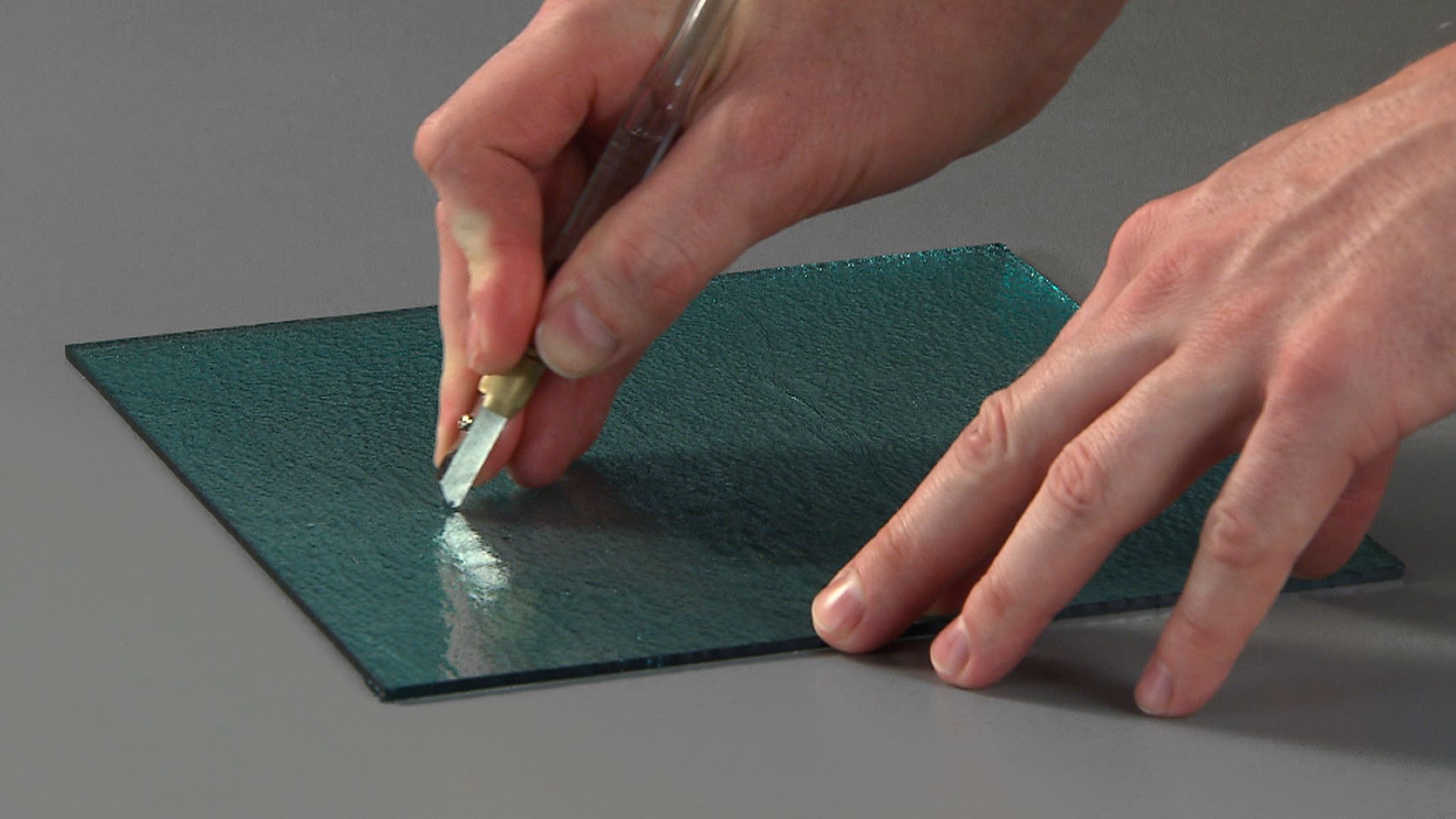



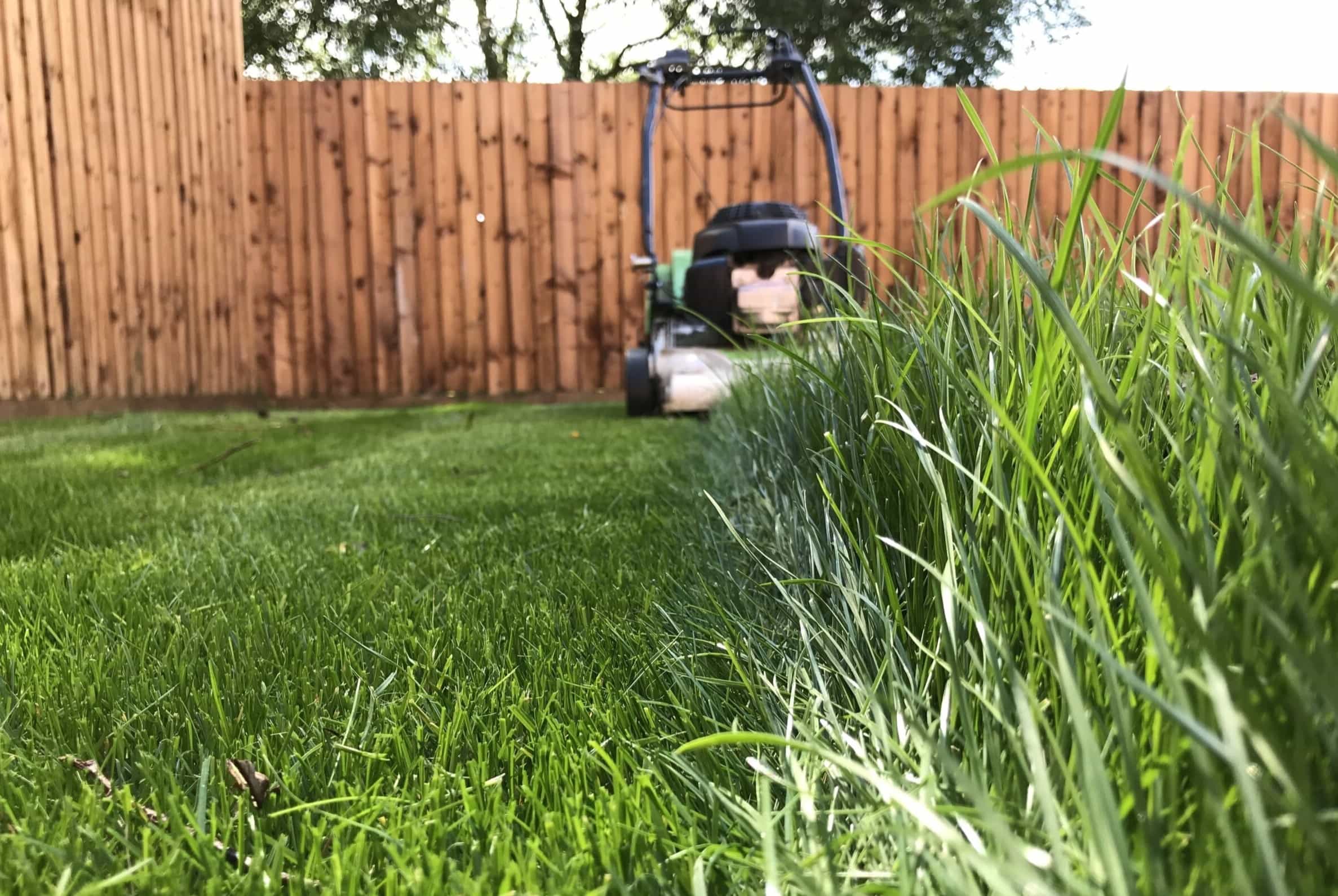


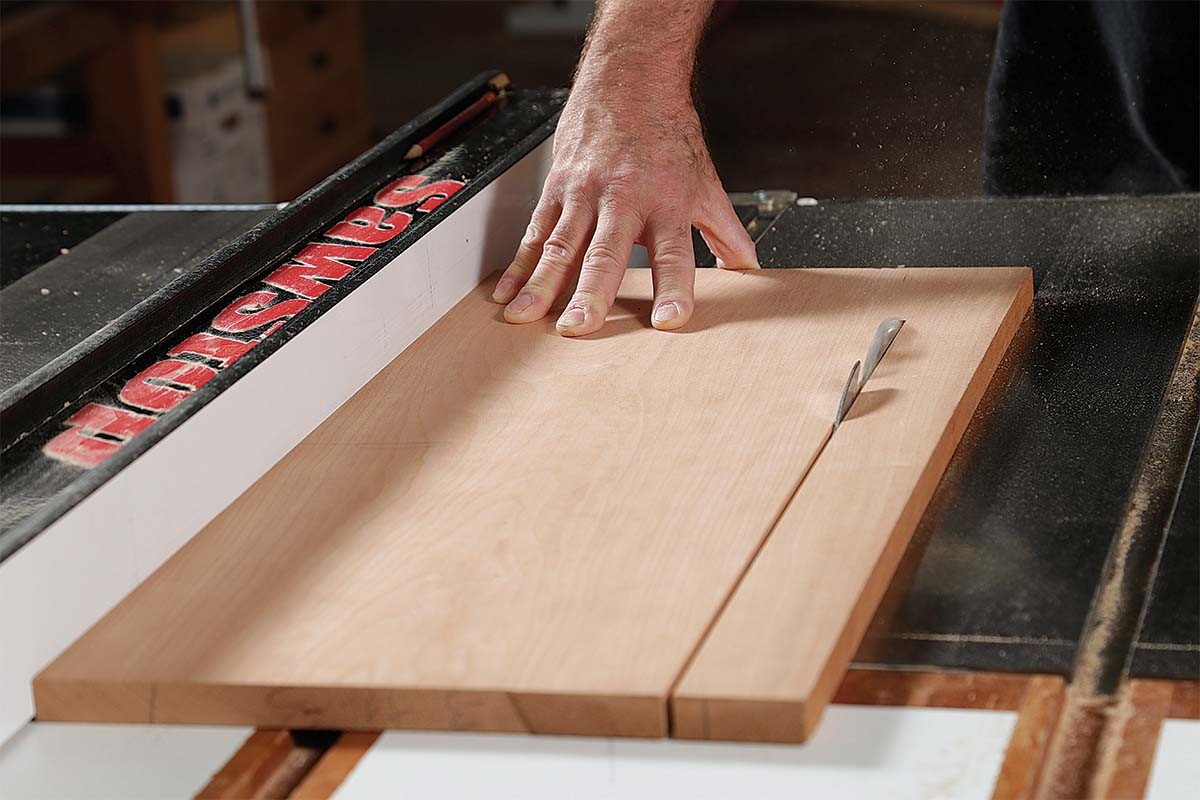
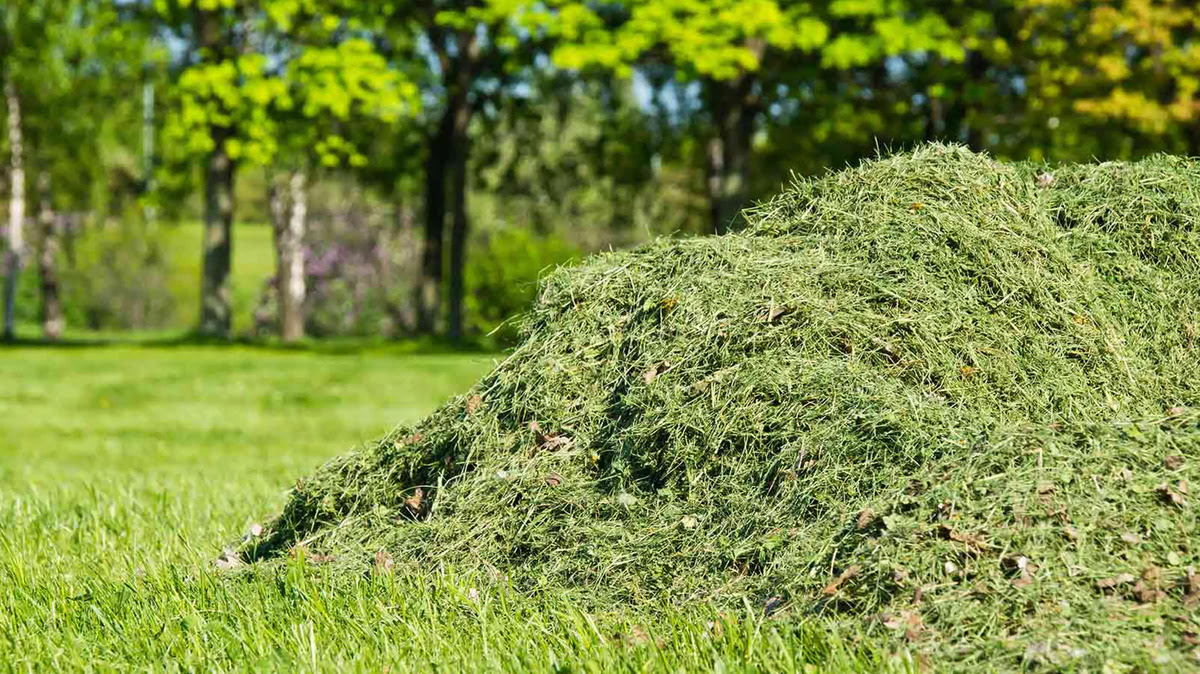


0 thoughts on “What Is Cut And Fill In Construction”